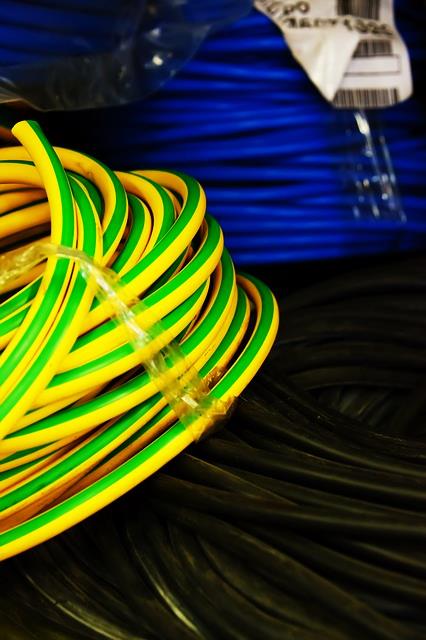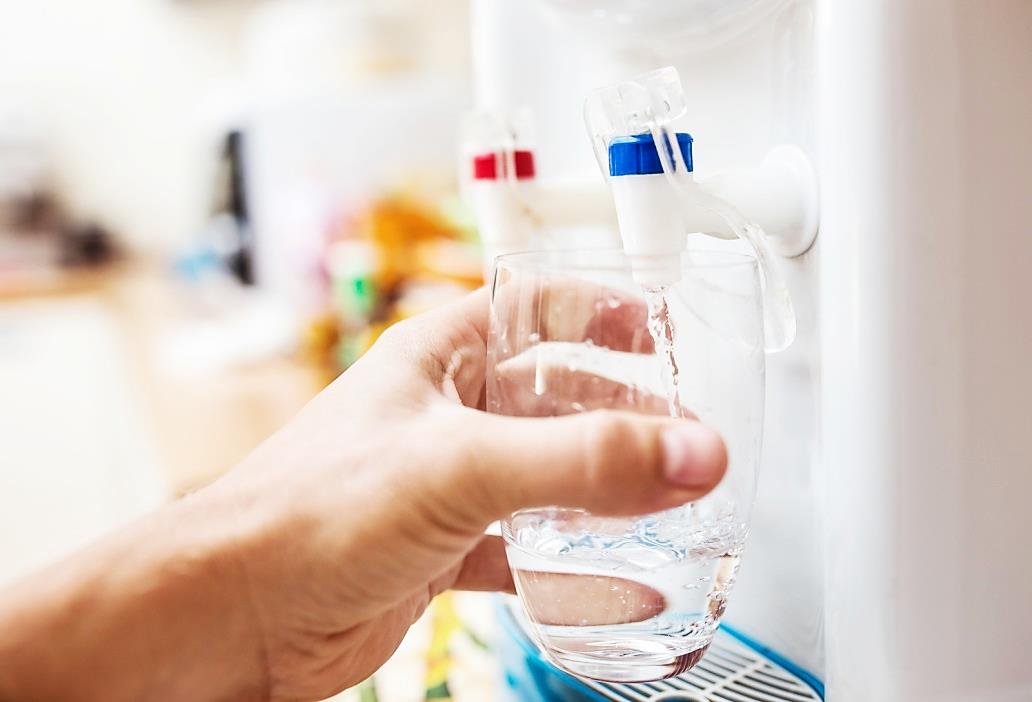
by Fern Shaw | Jan 31, 2017 | mains fed water cooler, water cooler, Water Coolers, water dispenser
- Eco-Friendly
By using a water cooler dispenser, you are helping to protect our environment. We use billions of individual plastic water bottles each year and millions end up in our rubbish each day. By drinking water from a reusable water bottle and refilling our water bottles with a water cooler, we can significantly reduce this number. This means that you can still enjoy the convenience of having water with you at all times and be safe in the knowledge that you are lessening the harmful impact on the environment.
- Saves money
While the upfront cost of purchasing a water cooler can be a bit more costly initially, over time you can expect to see significant savings. Water coolers offer an economical way to drink more water. Instead of purchasing many disposable water bottles, you can save money by buying large bottles for your dispenser. If you’re using a mains fed water cooler dispenser, you can also expect to see significant savings.
- Perfect Temperature
Attractive AppearanceMany water dispensers come with hot and cold water taps. The cold water is perfect for a refreshing glass of water. The hot water tap offers a quick and convenient way to make tea, coffee, soup, hot chocolate or tea. Some units also come with a room temperature water tap for added convenience.
When most of us imagine a water cooler, we only picture a white plastic unit that isn’t the most appealing and won’t complement our kitchen, reception or office areas. Fortunately, this stereotype is no longer true. AquAid’s range of water coolers are available in a wide variety of shapes, sizes and materials. Common finishes include black, white, silver and stainless steel.
- Perfect Size
If you’re concerned about where you would put a new water cooler, you don’t need to worry. Water coolers come in several shapes and sizes, so you can choose a unit that’s sure to fit perfectly in your space. Common models include a free-standing water cooler or a desktop (countertop) water cooler. Free-standing units are typically larger and are better suited for use in areas where there is more floor space. In contrast, desktop (countertop) water dispensers are usually more compact and are ideal for use in smaller spaces.
Look out for Part II to read about the other benefits a water cooler brings for you.

by Fern Shaw | Jan 31, 2017 | Water, water cooler
Confusing queues
We’ve all come upon the scene: There’s Mr Smooth, elbow cocked up on the butt of the water bottle, chatting up Mrs Coy – a road block between you and the sweet nectar. So you wait, reluctant to intrude on their conversation but unsure when it will break up and you’ll be free to get your water or tea or lemon water or coffee or hot drink! Not good.
Lax jug replacement
Few things are more irritating to a parched person than hitting that blue lever with no results. Why, oh why, do our office mates feel justified in draining the last of the water into their cups but neglect to replace the empty jug?
Water spillage
This one’s always fun. Your brawniest colleague sets about his or her civic duty of swapping out the 9ℓ bottle. Good job, responsible co-worker! But it all goes awry the minute he flips the bottle over and a quarter of its contents end up on the break room floor. Mayhem and carnage and wet, soggy carpet. Ugh.
Dirty spigot
It doesn’t take a germaphobe to be disgusted by the sight of a colleague’s personal water bottle getting too cosy with the spout as they fill up. Just guzzle directly from the nozzle, why don’t you? It’s equally unappetizing to see the sludgy remnants of a coffee mug in the tray beneath the water spout.
Some tips:
If you cause a spill, sop it up. If tea splatters from your mug when you go in for a hot-water refill, wipe it up. Nobody wants to see a Jackson Pollock installation on the water cooler.
Don’t touch your water bottle’s mouthpiece to the spigot. No wonder the black plague makes its way through the cubicle farm with alarming regularity.
Don’t crowd the cooler. If you’re done filling up, back away and continue the conversation with your office crush at a respectable distance from the water spout.
If the well has run dry, you must re-supply. Even if there’s a thin trickle of water coming out of the spout, acknowledge that you’ve reached the bottom of the tap, and don’t leave it to the next thirsty soul to replace the bottle.
If you’re physically unable to replace the bottle, ask for help. Weak upper body strength is no excuse to be a lazy water cooler user. Let’s all band together to keep the water cooler the friendliest spot in the office.

by Fern Shaw | Jan 31, 2017 | Water Boilers, water cooler
Recently in my neck of the woods we had a huge brou-hau-hau with a well-known ISP (internet service provider). It was a bun fight of note. I don’t know about where you are, but where I am, service providers have a rather unpleasant habit of blaming other service providers. A common excuse is, ‘Oh, the underground cable is broken’ or, ‘the undersea cable was used in a tug-of-war competition between a griffon and Godzilla’ – okay, slight exaggeration there, but honestly, it may as well be as farfetched as that. Or is it?
I stepped away from my usual station at the water cooler – actually let me caveat that with – stepped away from the water boiler (it is bleeding cold you know) and followed the undersea cable. Not literally!
What I think a lot of us don’t realise is that apart from all that we see – telephone poles suspending bundles of cables; the cables installed in our homes connecting to our devices – there’s actually a whole lot unseen going on out there that allows for us to operate in a ‘wireless’ world. But what we see is just a small part of the physical makeup of the net. The rest of it can be found in the coldest depths of the ocean. Here are just a few things you might not know about the Internet’s system of undersea cables.
- Cable installation is slow, tedious, expensive work
*Ninety-nine percent of international data is transmitted by wires at the bottom of the ocean called submarine communications cables. In total, they are hundreds of thousands of miles long and can be as deep as Everest Is tall. The cables are installed by special boats called cable-layers. It’s more than a matter of dropping wires with anvils attached to them – the cables must generally be run across flat surfaces of the ocean floor, and care is taken to avoid coral reefs, sunken ships, fish beds, and other ecological habitats and general obstructions. The diameter of a shallow water cable is about the same as a soda can, while deep water cables are much thinner – about the size of a Magic Marker. The size difference is related to simple vulnerability – there’s not much going on 8,000 feet below sea level; consequently, there’s less need for galvanized shielding wire. Cables located at shallow depths are buried beneath the ocean floor using high pressure water jets. Though per-mile prices for installation change depending on total length and destination, running a cable across the ocean invariably costs hundreds of millions of Pounds.
- Sharks are trying to eat the Internet.
There’s disagreement as to why, exactly, sharks like gnawing on submarine communications cables. Maybe it has something to do with electromagnetic fields. Maybe they’re just curious. Maybe they’re trying to disrupt our communications infrastructure before mounting a land-based assault. (My theory.) The point remains that sharks are chewing on the Internet, and sometimes damage it. In response, companies such as Google are shielding their cables in shark-proof wire wrappers.
- The Internet is as vulnerable underwater as it is underground.
It seems like every couple of years, some well-meaning construction worker puts his bulldozer in gear and kills Netflix for the whole continent. While the ocean is free of construction equipment that might otherwise combine to form Devastator, there are many ongoing aquatic threats to the submarine cables. Sharks aside, the Internet is ever at risk of being disrupted by boat anchors, trawling by fishing vessels, and natural disasters.
After reading all of this, colour me more eddicated and pretty impressed. And perhaps a little more patient when I hear that my lack of connectivity is due to an undersea cable breakage Them there sharks have to eat too you know.
*Extracts from an article at Mental Floss

by Fern Shaw | Jan 25, 2017 | Water, water cooler
The winter weather is upon us, bringing with it time to bundle up, exercise less and usually eat less greens, and more of the comfort food … or so we’d think.
But, resorting to more hibernation type habits isn’t really the way to go (One of my personal mantras is ‘shoulda been a bear’ – as I believe hibernating for 8 months of the year is a sound idea). There are loads of options we can take in the winter months that actually aren’t that difficult to follow and can keep as summer lean in the process.
Keep exercising
I’m not suggesting that you swim the Channel or go running in minus ten degree weather, but if you attend a gym or health fitness club, keep up with it. In cold months, your own exertions will keep you nice and toasty while exercising, instead of trying to continuously cool down when you’re exercising in the summer months. Just remember to keep hydrated. You can become just as dehydrated in winter as you can in the summer. Drink water, lots of it.
If you don’t have access to a fitness club, exercise at home – there is tons of information on YouTube; on social media or on the internet in general that can give you adequate instruction on exercise regimes you can follow to keep toned up.
Bulk up with rich healthy food
Again, the instinct (which is hard wired into our genetic code) is to eat rich, fatty foods in winter so we can bulk up and insulate ourselves. The thing is, we’re not seals and we don’t live in the Arctic (even if some days if may feel like it). There are loads of options to eat hearty warming food without packing on the weight.
The food in season right now is plentiful and it makes good sense, because if you eat with the seasons, it keeps your spend on food down, as in-season food is more readily available.
There’s such a huge range food that’s available this Autumn, you’ll be spoilt for choice:
Fruit- Pears; apples, cranberries; elderberries and quinces are all in season now.
Vegetables – Artichoke, beetroot; butternut squash; celeriac; celery; chicory; chillies; horseradish; leeks; marrow; parsnips; pumpkin; shallots; swede; sweetcorn and tomatoes.
Herbs and nuts – Almonds; brazil nuts; chestnuts; chives; hazelnuts; rosemary; sage; sorrel and walnuts.
For the meat eaters – Beef; duck; lamb; rabbit; turkey and venison.
Fish – Clams; cod; dover sole; haddock; halibut; hake; lobster; mackerel and plaice.
Finally, in the food annals – don’t forget about good old porridge: Oats provide soluble fibre called beta-glucan which can help lower LDL (bad) cholesterol. The fibre in oats makes it a slow-releasing carbohydrate which keeps blood sugars steady so should stop you reaching for a high-fat snack. If you are not a fan of porridge, add oats to smoothies, mueslis or yogurts, to bread or fish.
Don’t stop drinking your water!
Throughout all of this, keeping up with exercising; eating the right food, the most important winter months regime is to keep up with drinking water – if you’re averse to cold water, then drink warm water. If you’re drinking from your water cooler in the work place and the water’s a bit chilly, then adjust the thermostat.
Not only does water fill you up and make you less inclined to eat too much, but often when you think you’re hungry, you’re actually dehydrated, so drinking enough water is a win-win all round.

by Fern Shaw | Jan 25, 2017 | water cooler
There’s so much literature out there about water coolers. Water cooler jokes; euphemisms; there’s even an expression where gathering at a water cooler station means the same as you being able to take a break, as in, ”I’ll meet you at the water cooler in 10”. Although this usually means you’ll be replenishing your water, it also means that you’ll be taking a break, perhaps catching up with workmates; sharing ideas; telling the latest (clean, we hope) joke. For all we know, somewhere out in the big, wide world, there’s a guru meditating next to a water cooler, waiting to spread their wisdom and philosophy to whoever draws near to top up their water.
Not that taking a break in your work day is something negative, or an indication that you’re counter-productive.
There have been numerous studies where the results indicate that taking a break at work; similar to taking a power nap; actually make you indeed, more productive, not less.
Further to this, if you use your water cooler station not just to take a break, but to also replenish your water cup or bottle, not only are you helping your brain a breather to re-boot, but the chances of increasing your productivity are higher, as the more hydrated you are, the better your concentration, memory retention and general well-being.
So, which are you? Are you the pile-driver workaholic who roars through the day barely lifting your head to acknowledge others? Or, are you more of the sensible, know-that-taking-a-break-is-good-for-you ilk?
Whatever your at-work-method is, if you don’t currently have a water cooler in your work space, if you consider the benefits, perhaps it’s time to make the call. To us at AquAid, that is. We have a wide range of water cooler and water products to suit your requirements and we’d be pleased to assist.
To call us at AquAid: 0800 772 3003
To e-mail us: Click here
If you’d like to browse our range of water coolers: Click here
To follow us on social media: Twitter and Facebook

by Fern Shaw | Jan 23, 2017 | Water Boilers, water cooler
We Britons are big on weather – it’s the go to topic of discussion irrespective of whether we’re chatting with colleagues around the
water cooler or family or friends, and it’s the safety topic when you’re chatting to strangers or people you’ve just met.
Discussing the weather isn’t just exclusively a British thing though – it’s pretty much a global go to safe topic around the world. If you’re a southern hemisphere dweller, you’ll invariably be moaning about the heat at the same time that the northern hemispherers will be complaining about the icy winds, the piles of snow, but wherever you reside, there’ll be a whole lot of weather talk going on.
Thing is though, often the weather isn’t really topical, it’s actually quite dull “Here, mate, seen the weather – 1 degree difference between yesterday and today – isn’t that something?” Well, actually, no … it isn’t.
But, whatever our opinion about the topic of weather, there’s no denying it has a huge impact on our behavioural patterns; moods; what we eat; our travel patterns; clothing and what we drink.
F’r instance, in the summer months, we’re constantly on the lookout for the perfectly chilled water (perfectly understandable), but come the winter months, like now, with all the snow and brrr, there’s nothing better than a cuppa to stave off the chill, so you’re more likely to be on the lookout for a water boiler that can provide you with a constant hot water supply throughout the day.
Either way, even if you’re freezing your tootsies off trudging through the snow and all you can think about is a piping hot drink when you get inside, it’s worth keeping in mind that you’re just as likely to become dehydrated in winter as you are in summer, so by all means, drink those hot drinks, but balance out each hot drink with a drink of cold water and keep yourself fighting fit and healthy come rain, snow or shine.






